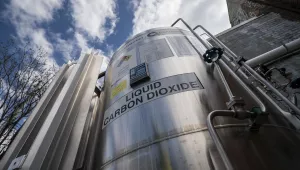This policy brief is based on Belfer Center discussion paper #2010-16.
BOTTOM LINES
- The six BRIMCS countries are major players in ERD&D. With a minimum of $13.8 billion (PPP1) in ERD&D investments by governments and 100 percent government-owned enterprises in 2008, the governments in the BRIMCS countries may have control over greater amounts of ERD&D funding than the member countries of the International Energy Agency, whose government investments in 2008 were estimated at $12.7 billion (PPP1).
- Government-owned enterprises have a central role in the government structures and allocation mechanisms for energy RD&D investments in the BRIMCS countries. The role of governmentowned enterprises is, however, not uniform throughout these countries and across different energy technologies. Any government effort to cooperate with or among the BRIMCS countries needs to be tailored to the governance structures and innovators of a particular country.
- A better understanding of energy-technology innovation policies across countries would be helpful to stimulate international learning. Demonstration projects, policies that promote entrepreneurial activities, and more coordination of deployment policies for renewable energy technologies or energy efficiency provide important opportunities for cooperation.
New Harvard Kennedy School research finds that energy research, development, and demonstration (ERD&D) funding by governments and 100 percent government-owned enterprises in six major emerging economies appears larger than government spending on ERD&D in most industrialized countries combined. That makes the six so-called BRIMCS countries—Brazil, Russia, India, Mexico, China, and South Africa—major players in the development of new energy technologies. It also suggests there could be opportunities for cooperation on energy technology development among countries.
INTRODUCTION
Over the past decade, the six BRIMCS countries—Brazil, Russia, India, Mexico, China, and South Africa—have become important global players in political and economic domains. In 2007, they were collectively responsible for a third of the world's energy consumption, driven by China's growing energy use. Despite their increasing significance in the world’s energy sector, very little systematic analysis of their energy investments, innovation institutions, and energy innovation policies has taken place. The International Energy Agency (IEA) is one of the few agencies that have been collecting data on ERD&D investments, but none of the BRIMCS countries are members.
The study has collected existing data on public and private energy RD&D investments and conducted a systematic comparative analysis of energy technology policies in the six BRIMCS countries. The data used in this analysis came from a wide range of institutions (governments and government-owned enterprises, etc.) using different definitions and levels of comprehensiveness of what is included in RD&D. The comparative analysis examined: (1) the administrative entities and procedures that set the direction of government support for energy innovation activities; (2) the allocation mechanisms for ERD&D support; and (3) the most important institutions and policies that the governments put in place to accelerate energy technology innovation.
The report finishes with a systematic analysis providing concrete recommendations for coordination and cooperation among and with the BRIMCS countries.
RESULTS
The data suggest that in 2008, a minimum of $13.8 billion was invested by governments and 100 percent government-owned enterprises in ERD&D in the six BRIMCS countries. The majority of these funds (82 percent) are invested in science and technology activities by 100 percent government-owned energy enterprises in China. Assuming that these activities relate to "new" technologies rather than commercially available technologies, the results suggest that governments in the BRIMCS have control over larger amounts of ERD&D funding than governments from the IEA member countries, whose total government investments were $12.7 billion in 2008. Governments in the BRIMCS countries are able to direct greater amounts of ERD&D investments towards particular energy technologies than governments in the IEA member countries. However, the BRIMCS countries are also limited in their ability to shift funds away from the sectors in which their government-owned enterprises are operating. This ability to control investments could also be understood as giving the BRIMCS countries an opportunity to better align the energy innovation system of their country to their national priorities.
Data on private investments in energy RD&D in both the BRIMCS and IEA countries is scarce, so direct comparison between the total energy RD&D investments in the BRIMCS countries and that in IEA member countries is not possible. This study collected data on an additional $4.8 billion of investments by private industry, partially government-owned enterprises, and local governments in the BRIMCS countries in 20082. However, the data is incomplete, which underlines the need for a common and systematic methodology for reporting energy RD&D investments.
Another significant finding is that there is limited data on funding in these six countries for renewable energy technologies, energy efficiency, and transmission, distribution, and storage. Some aggregated data sources of funding information on these three technology areas are available and have been reported as part of the "not specified" energy technologies category. Despite the large sum of unspecified energy RD&D investments, the data indicate that fossil and nuclear energy combined receive higher levels of government funding in the BRIMCS countries than any of the other energy technology categories.
This analysis suggests several opportunities for cooperation among and with the BRIMCS countries, including new policies to support demonstration projects in all five energy technology areas (fossil, nuclear, renewable energy, energy efficiency, and transmission, distribution, and storage). Second, most BRIMCS countries have a large overlap of policies and institutions supporting the deployment of renewable energy and energy efficiency technologies. Third, there are too few policies and institutions supporting entrepreneurial activities. These gaps and overlaps offer opportunities for coordination and learning.
INSIGHTS FOR POLICYMAKERS
The BRIMCS countries are major players in ERD&D. Policymakers can no longer ignore the large investments that are taking place in these countries which will impact energy technology innovation in their own country. Unlike the industrialized countries, most BRIMCS countries coordinate and support ERD&D to a large extent through their governmentowned enterprises. Government efforts to cooperate with or among the BRIMCS countries need to be tailored to the governance structures and innovators of a particular country.
Despite the increased support within the BRIMCS countries for the development of renewable energy technologies, fossil and nuclear ERD&D still dominated government investments in the BRIMCS countries in 2008. Since most government-owned companies are either dedicated to fossil or nuclear energy, larger increases in government investments to renewable energy technologies may not be straightforward to manage. Governments in the BRIMCS countries will need to manage the role that government-owned enterprises can play in increasing investments in alternative sources of energy.
The governments in the BRIMCS countries are reporting limited information on their ERD&D investments. Data sources are not comprehensive, and there is a lack of common definitions of what constitutes ERD&D. This study recommends that policymakers invest in data collection methods that are more transparent, comparable, and provide detailed insights into how investments have evolved over time.
Substantial differences in government structures and ERD&D allocation mechanisms among BRIMCS countries means that different stakeholders will need to be involved in order to make these cooperative activities work. In each instance, policymakers will have to determine which actors to engage with, what activities to target, and the aim of the cooperation.
Finally, a more systematic analysis is required to find opportunities for cooperation. It is extremely difficult to measure and compare the actual impact of policies on energy technology innovation in different countries. However, the comparative framework used in this paper—categorizing policies and institutions on the basis of the stages, actors, or functions they target—provides a first step toward a more structured approach to international cooperation.
1 Purchasing Power Parity
2 In comparison, the Bloomberg New Energy Finance database reports a total of $1.8 billion current dollars of venture capital and private equity (VC/PE) investments in energy in the BRIMCS countries and $19.8 billion current dollars of asset financing in energy in China in 2008.
Table 1. Overview of information available on energy RD&D investments in the BRIMCS countries, the IEA, and the United States.
| in Million 2008 PPP SInt* | Fossil (incl. CCS) | Nuclear (incl. fusion) | Electricity transmission, distribution, & storage | Renewable energy sources | Energy efficiency | Energy technologies (not specified) | Total |
| Brazil | 79 | 8 | 122 | 46 | 46 | 12 | 313 |
| Russia | 20 | no data | 22 | 14 | 25 | 45 | 126 |
| India | 106 | 965 | 35 | 57 | no data | no data | 1163 |
| Mexico | 140 | 32 | 79 | no data | no data | no data | 252 |
| China | 6755 | 12 | no data | no data | 136 | 4900 | 11803 |
| South Africa | no data | 133 | no data | no data | no data | 9 | 142 |
| BRIMCS total | 7100 | 1149 | >259 | >117 | >208 | >4966 | >13799 |
| IEA | 1466 | 4927 | 12651 | 1553 | 1671 | 1789 | 12671 |
| United States | 659 | 770 | 319 | 699 | 525 | 1160 | 4132 |
*Data from United States, Brazil, Russia, India, China, and South Africa based on 2008, Mexico on 2007.
1This category includes RD&D expenditure on "hydrogen and fuel cells" and "other power storage technologies."
>These cumulative values are based on data from only three to four BRIMCS countries, so actual expenditures are expected to be higher.
Statements and views expressed in this policy brief are solely those of the authors and do not imply endorsement by Harvard University, the John F. Kennedy School of Government, or the Belfer Center for Science and International Affairs.
The authors are grateful to the Doris Duke Charitable Foundation for funding this work.
Kempener, Ruud, Laura Diaz Anadon and Jose Condor Tarco. “Energy Innovation Policy in Major Emerging Countries.” Energy Technology Innovation Policy Project, Belfer Center, December 2010








